Video podcasts are some of the most popular forms of content. From The H3 Podcast to Call Her Daddy and Office Ladies, many video podcasts get millions of viewers yearly. If you’re a new podcaster wondering how to start a video podcast, we’ve got you covered in this guide.
According to a Morning Consult study, 32% of podcast listeners in the US prefer video content. That’s a huge percentage of podcast listeners! It’s essential that you don’t miss out on this key demographic, so creating a video podcast and your own podcast is essential for reaching the next step of success.
Interested in learning more? Check out our guide: How to Start a Podcast on Spotify.
What is a Video Podcast?
A video podcast is a dynamic form of digital content that merges the traditional elements of podcasting with video's visual appeal. Unlike audio podcasts, video podcasts allow viewers to see the host and guests, adding a visual dimension to the conversation. This format can include a variety of styles, such as interviews, how-to tutorials, panel discussions, and more. Podcasters can create a more engaging and immersive experience for their audience by incorporating video elements.
Video podcasts are typically published online and accessible through various platforms, including YouTube, Vimeo, and podcasting apps like Apple Podcasts. This versatility allows creators to reach a broader audience and capitalize on the growing demand for video content.
Whether you’re discussing the latest trends, sharing expert advice, or conducting interviews, video podcasts offer a powerful way to connect with your audience on a deeper level.
Benefits of Video Podcasting
Creating a video podcast has many benefits, the most obvious being that you can connect with your audience! Face-to-face connection is crucial for creating strong relationships, so by letting your audience see you, you’re already connecting with them. Recording a video podcast also reaches more listeners. You can publish your video on YouTube, allowing you to tap into a new core audience. Promoting a video podcast effectively through various strategies, including social media, collaborations, and SEO optimization, can enhance audience reach.
Video podcasts can also open up more ad opportunities; getting ads in your videos can increase your revenue and even add new income streams for your podcast. You can also use your video content to create short-form videos for your social media platforms. It’s a little more effort for a lot of benefits. All you need to do is know how to set up your camera, record, edit, and upload! Check out our tips for how to get started below.
3 Types of Video Podcast Formats
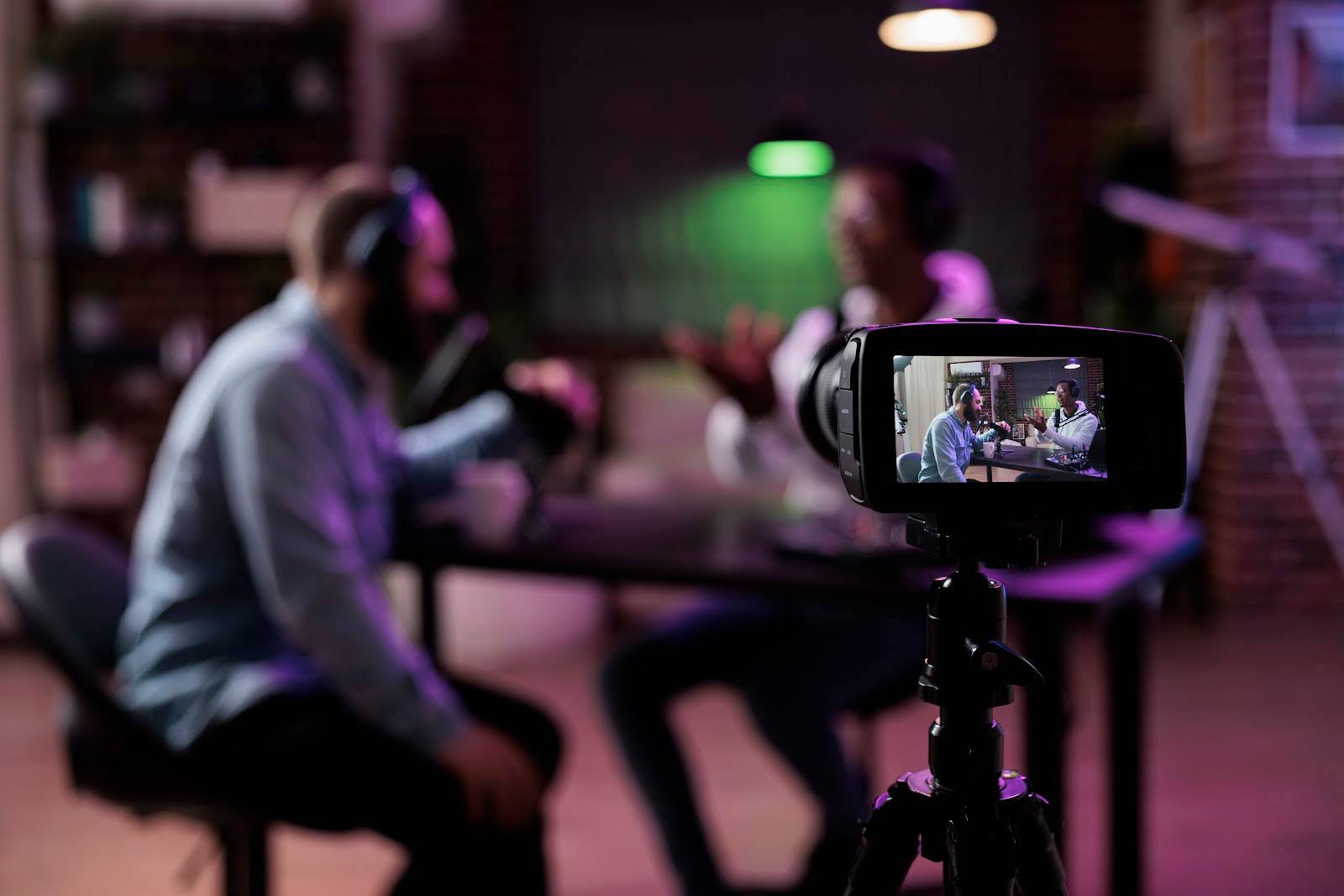
Static Image Recording
Static image recording is a workaround method for creating a podcast with video. Creating a static image video podcast means you don't record any footage; you simply make a video with visual elements and add your audio file. It's a quick and easy way to create a video podcast to upload to video platforms like YouTube.
This is an excellent method for camera-shy podcasters or podcasters on a budget. You can benefit from reaching a new podcast audience and even insert ads into your video. However, this style of video content isn't as impactful as a recording podcast where the viewer can see the host.
In-studio Recording
In-studio recording is pretty self-explanatory. It involves recording your podcast in a studio and setting up a video camera to create video recordings of your podcast episode. This method works for solo podcasts or interview podcasts, and it’s a great way to capture high-quality content for your podcast in a professional environment.
Remote Interview Recording
Remote podcast recording is excellent for podcast hosts who interview guests from all across the globe. Remotely recorded video podcast episodes are just as impactful as in-studio recordings because the viewers still see the interactions between the podcast host and interviewee.
Many software options exist for remote podcast recording, including Zoom, Teams, Zencastr, and Riverside.fm. Selecting the right video podcast software is crucial for ensuring studio-quality recordings, remote guest capabilities, and integrated transcription and editing tools. Although there can be a learning curve when recording video for remote interviews, it’s worth taking a short online course or reaching out to fellow podcasters for tips and tricks. The benefits of creating video content with remote recordings are huge, so it’s worth the extra work.
Video Podcast Equipment
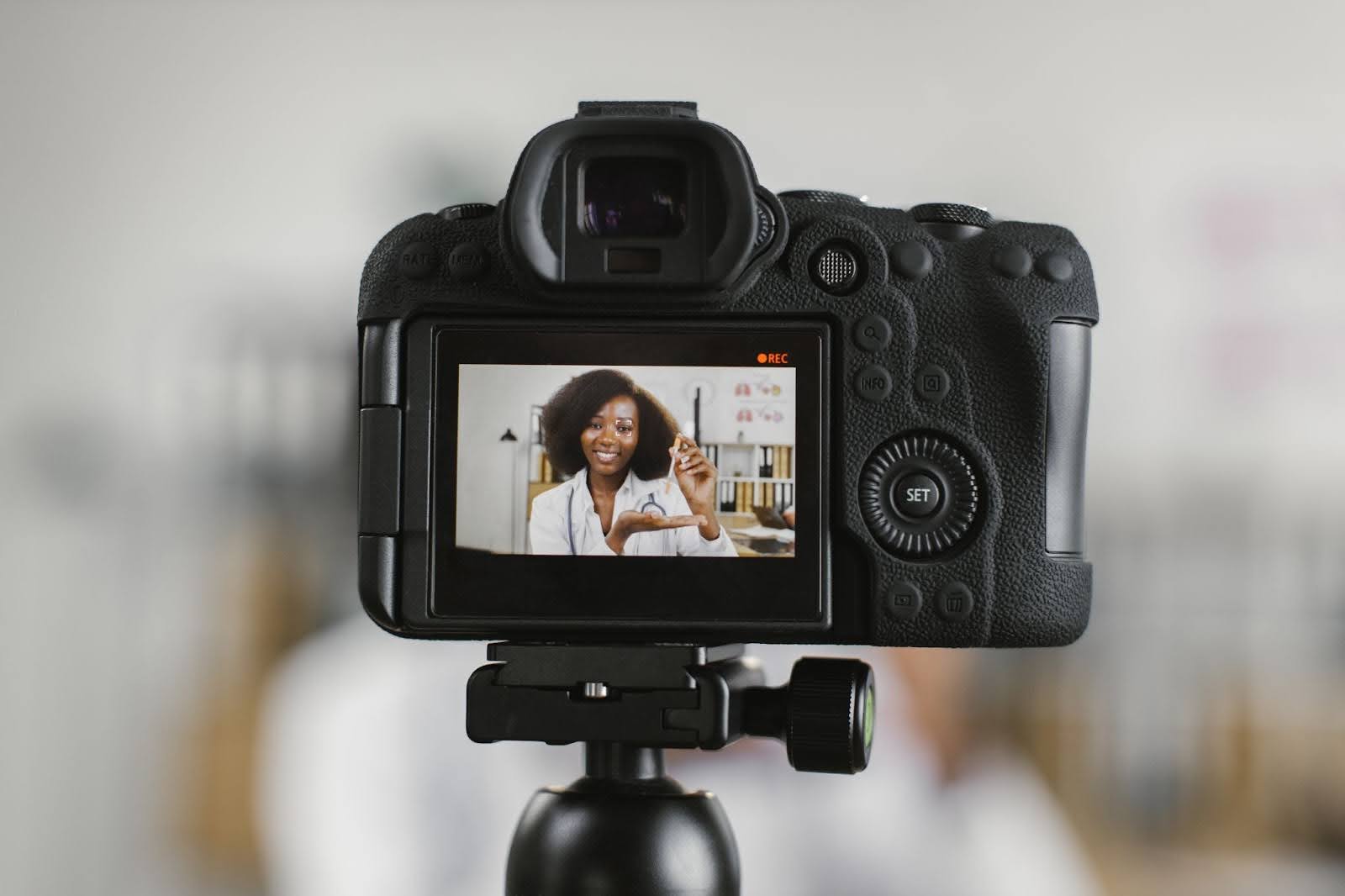
Choosing the right equipment is essential for creating a great podcast with video. Check out our Saspod team’s top recommendations. Adding a video element, such as static images or full video recordings, can enhance viewer engagement and create a more interactive experience.
Cameras
The Sony Vlog camera is designed to create content. With 4 K capabilities and a compact design, this camera is easy to set up, record, and capture high-quality video. Choose this camera if you're a beginner looking to capture and create great video content.
Fujifilm X-S20 is designed for video creation and offers a powerful combination of creative features and cutting-edge technology. It's designed to deliver incredibly high-quality video, capable of up to 6.2K. Designed for professional-grade video, this camera lands near the top end of camera pricing. If you're a podcaster dedicated to your craft, investing in a camera of this quality is essential!
Panasonic's Lumix HC-785K claims superior image quality and strong capabilities for capturing professional video. This camera is designed for sports video and features extreme attention to detail and splash and dust resistance. If you're looking for a robust camera for on-site interviews or location podcasting, this is the camera for you!
This camera is for remote podcasters. The OBSOT Tail Air Streaming Camera is an intelligent APP camera with gesture control that is ideal for video content recording. Designed for streamers, it is also suitable for podcasters creating remote interview episodes or elevating their solo episodes!
Microphones
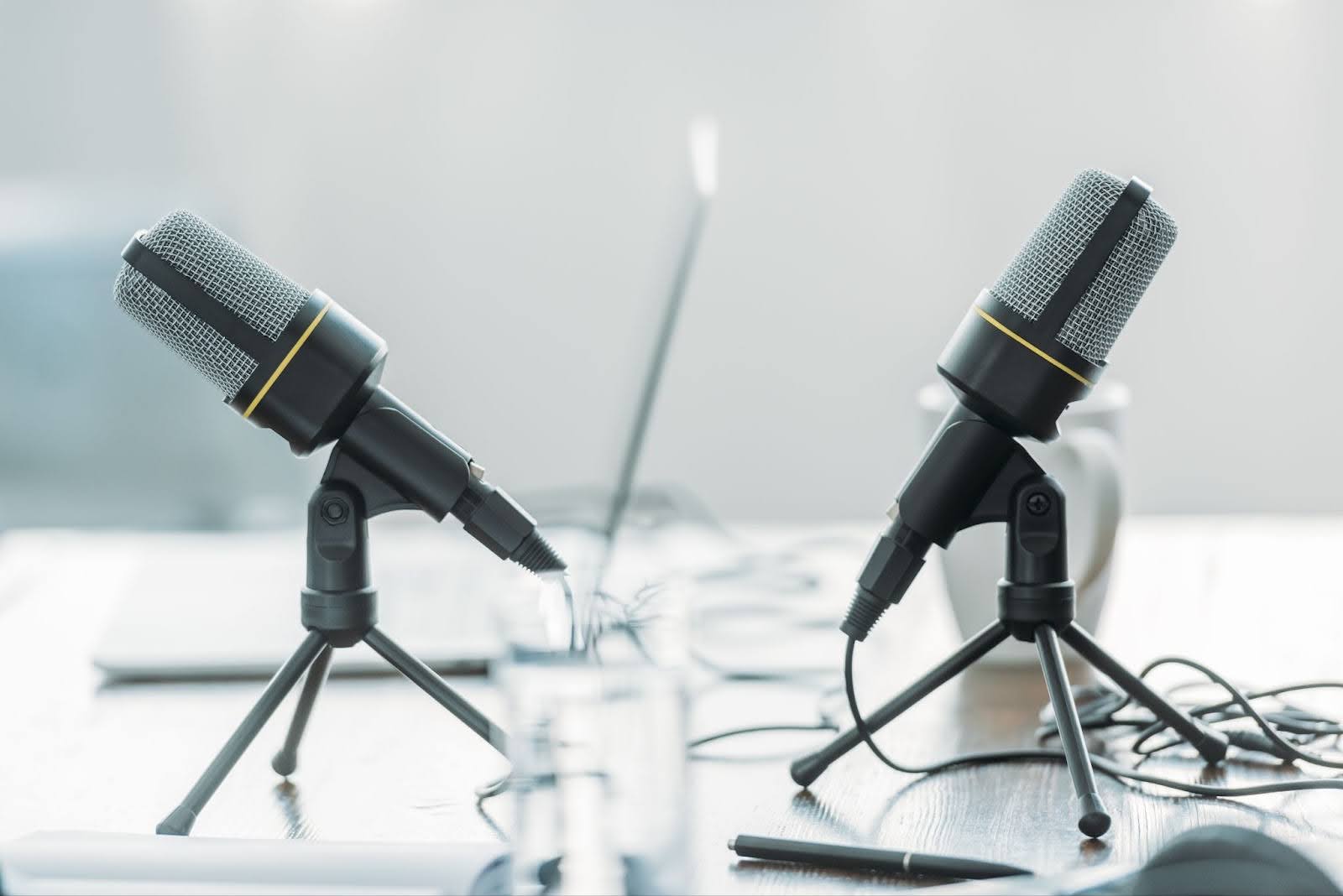
Shure's MV7 is designed for podcasters, streamers, and gamers. Its simple plug-and-play USB connectivity system makes it ideal for podcasters looking for an easy but professional recording setup. The microphone is also Zoom-certified, which makes it ideal for remote interview recording.
Blue Yeti is a famous microphone in the world of podcasting. It is known for its broadcast audio quality and is best known for use in video podcasting and streaming. With four pickup patterns, this microphone offers a flexible solution for podcasters looking to elevate their home recording studio.
Audio Technica's 2040 is an XLR mic, so it's best suited to podcasters with some technical recording knowledge. Its hypercardioid polar pattern provides maximum vocal isolation with minimal effort. If you're looking for a professional-grade microphone for your podcast studio, this is for you!
Rode's NT USB microphone is a sleek and aesthetically pleasing podcast microphone. Create studio-quality recordings with this easy-to-use microphone. It's ideal for remote interview recording because of its zero-latency headphone output. It also has a sturdy pop filter, preventing plosive sounds from ruining your audio recording.
Lighting
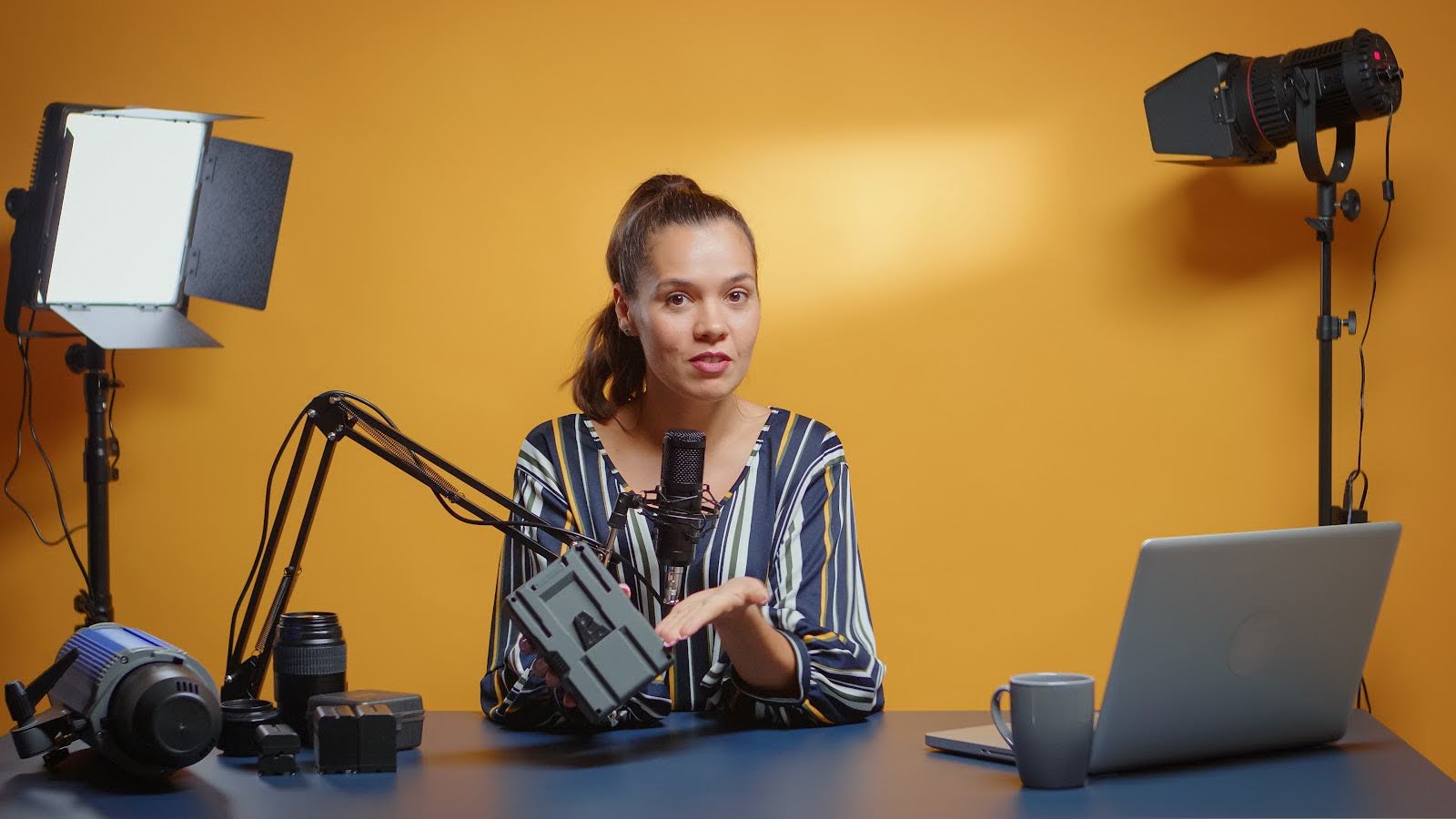
Three-Point Lighting
Three-point lighting is a favorite among content creators and a go-to for successful video podcasts. It's easy to adjust, simple to set up, and, overall, is one of the best-looking lighting setups for video content. To set up three-point lighting, place your key light at the four on a clock's face. Place a fill light at eight. Then, place a background light at one or two. Adjust the backlight as necessary, depending on what looks best for your shot. The goal is to create a balanced video image that looks professional and clear.
Two-Point Lighting
Two-point lighting is a simple setup best for a lower-budget video podcast and smaller recording spaces. In this scenario, you sacrifice your backlight and place your two lights at four and eight of the clock face. This positioning gives you even lighting so that the shot has no shadows. Although there may not be as much depth as with three-point lighting, it still creates a great video and a simpler recording process.
Video Lighting With One Light
If you're starting a video podcast on a budget, you can create video content with one light. This is an excellent option for saving money when creating content for your YouTube or social media channels. Many content creators and influencers use a one-light setup, find immense success, and create excellent audience engagement. You'll find success if your content is polished and you conduct high-quality interviews.
How To Create A Video Podcast
1. Set Up and Record
Positioning
Positioning is one of the key steps of video recording. When you're podcast planning, think about how you want to look on video. Typically, podcasters who record solo episodes position themselves in the center of the frame, creating an engaging presence where they can make eye contact with their audience.
If you're recording using a remote interview podcast format, consider how you'll position yourself on your webcam. Your background is just as important as where you'll sit in the frame. Make sure to use a tidy background and keep it professional and minimal so your audience can focus on your conversation with the guest.
Software
Choosing the correct software for your recording environment is paramount for both audio-only podcasts and video podcasts. If you’re recording a remote video podcast, using software like Zencastr or Riverside.fm is the best choice. Video podcast formats, such as in-studio interviews and remote interviews, can enhance the listener's experience and expand audience reach.
If you’re recording a solo podcast episode, software like Cubase Pro, Pro Tools, or Adobe Audition are excellent for capturing your audio. You’ll be able to record the video straight to your camera, but you’ll need excellent video editing software to use post-production. We recommend using Adobe Premier Pro, Apple Final Cut Pro, or Adobe Premier.
Recording
Once your equipment and software are ready, it's time to start recording! If you're new to podcast recording, it's best to start with a simple plug-and-play process using a USB microphone and a straightforward video camera.
If you're more advanced, you can start using XLR microphones and audio interfaces, but we recommend getting professional services when doing so for the first time. Now, you're ready to get started!
2. Edit the Video
Edit your video and sync the audio. A great way to do this is by outsourcing the editing process to a podcast production agency (like Saspod!) If you want to give editing a go yourself, there are loads of great resources online to teach you how to edit audio and video. What podcast editing software do podcasters use? Check out our blog post to find out!
3. Design a Thumbnail
When uploading your video podcast to YouTube, you'll need a thumbnail image to upload with it. You'll need a static image of yourself with a thumbnail title to create a thumbnail. For example, add an interesting quote from your episode to your thumbnail. This will engage viewers and grow your audience.
4. Upload the Video to a Hosting Site
Once your video podcast is ready, upload it to a hosting platform like Saspod. The hosting platform will distribute the audio podcast to streaming services like Spotify and Apple and upload your video podcast to compatible platforms like your YouTube channel.
5. Share the YouTube Link on Social Media
Share and promote your content on Social Media. Create short-form video content from your video podcast to promote your new episode. Social media is a great way to promote your content; short-form content is extremely popular. If you're working with a podcast production company like Saspod, we can create the content for you. All you need to do is send us your RAW files, and we'll take care of the rest.
3 Video Podcast Tips & Tricks
Here are some of our top tips for creating a great video podcast.
1. Quality Over Quantity
Creating a shorter but more valuable video is always better than making a long video that seems to go on and on. Prepare beforehand so you know what you'll say, and keep it to the point. Research is key when preparing to record your episode. Research the topic, your guest, and the best ways to present yourself as a podcast host. Making sure your podcast is the best it can be will set you apart from the rest.
2. Engage with Your Audience
When recording your video, make eye contact with the camera and engage with your audience. When recording solo episodes, look at the camera. If you're recording an interview, look at your guests to make them feel welcome and at ease. At the end of your episode, ask the audience questions. Propose questions related to the topic of your episode and invite viewers to comment and share their thoughts and opinions.
3. Promote Your Show
At the end of your video, remember to promote your show. Ask viewers to like, subscribe, and turn on notifications for your channel. You can also promote the products or services that you sell. If you have a guest on your show, promote their content too! Highlight the unique benefits of your video podcast compared to traditional audio content to capture a wider audience.
Get started with your video podcast!
Ready to start your own video podcast? We're here to help!
Contact us today for a free consultation, and we'll help you get started.
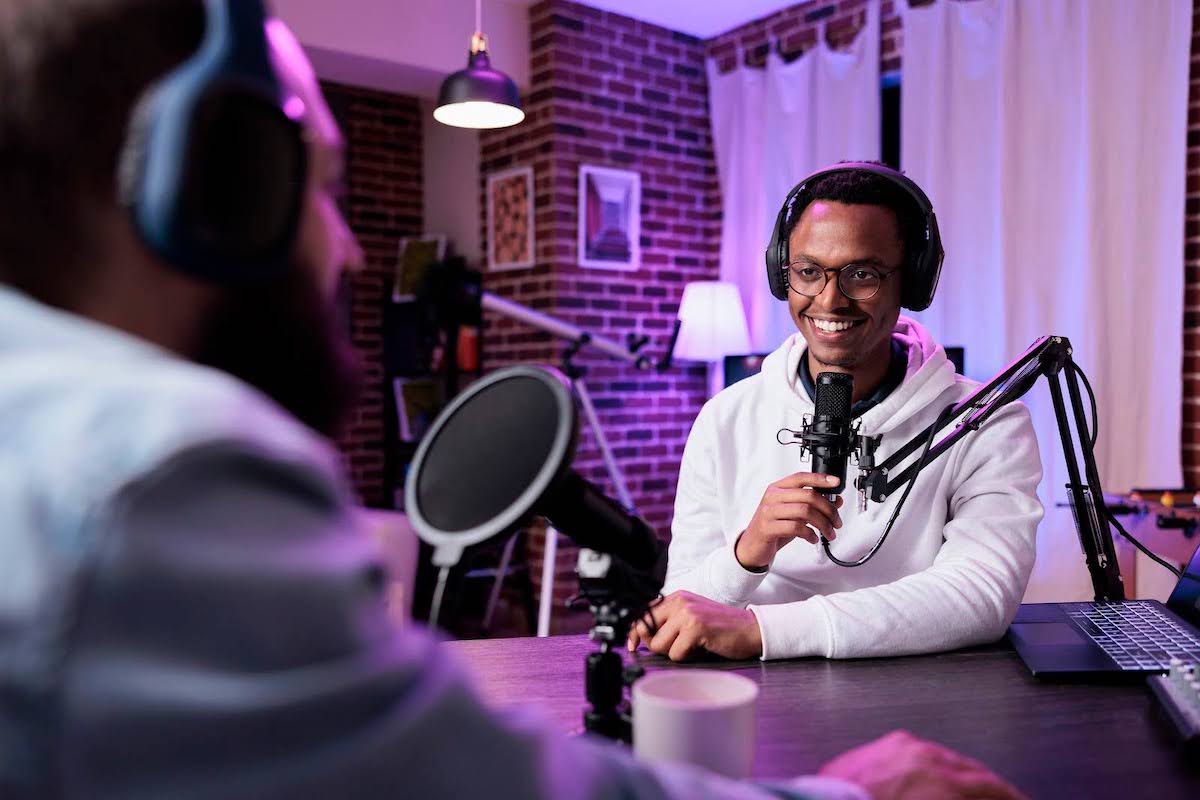

Comments
No comments yet!